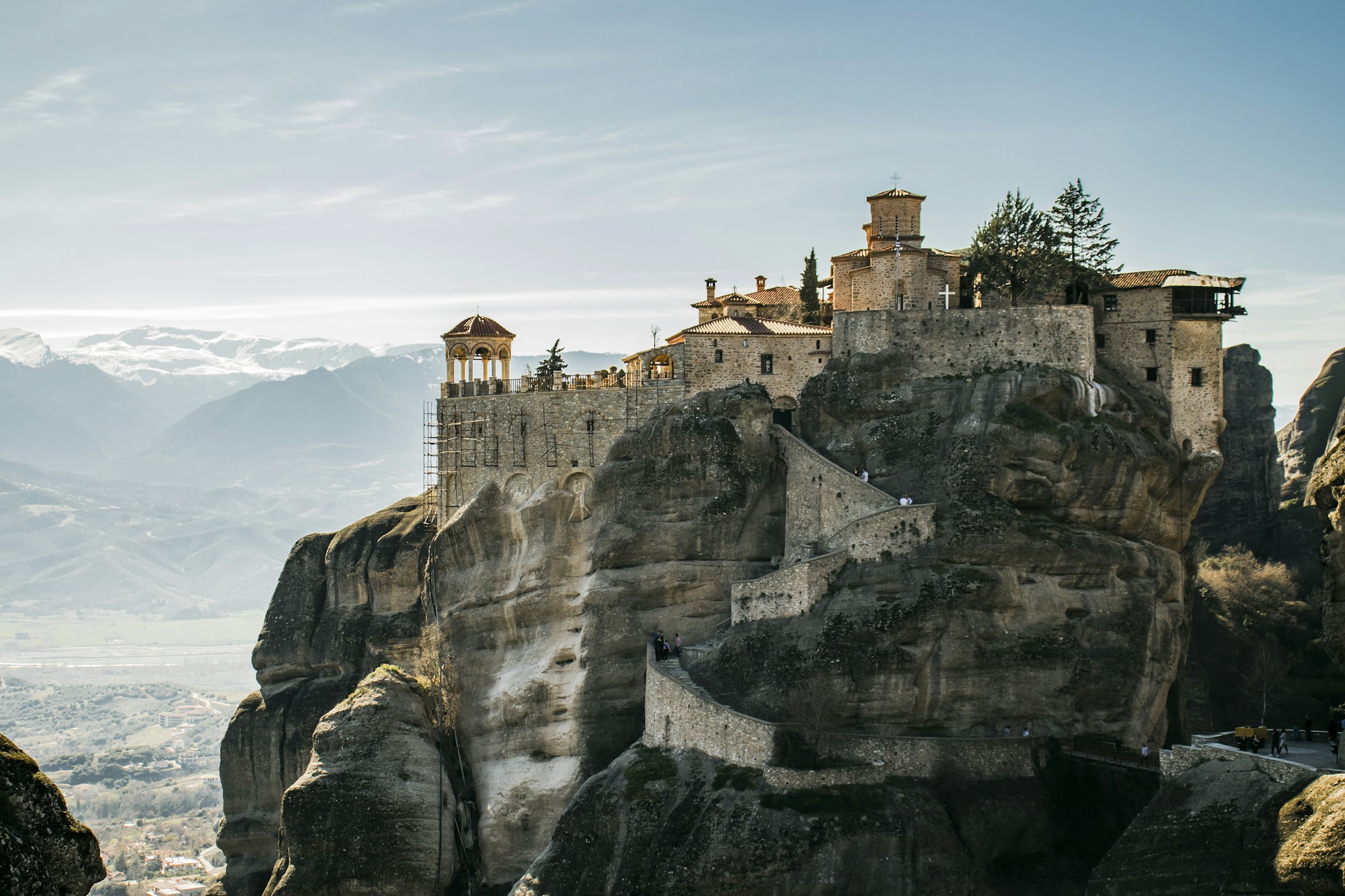Meteora Travel Guide: History, Traditions, Festivals, Customs
Explore Meteora: History, traditions, festivals, and customs in this unique travel guide. Discover the magic of Meteora!

Meteora Travel Guide
Introduction to Meteora
Meteora, located in central Greece, is one of the most extraordinary places in the world. Renowned for its breathtaking rock formations and ancient monasteries that perch precariously atop them, Meteora is a UNESCO World Heritage site and a significant landmark for both cultural heritage and natural beauty. The name "Meteora" means "suspended in the air," which perfectly describes these majestic rock pillars that rise hundreds of meters into the sky.
Historical Context
The history of Meteora dates back to ancient times. The rock formations themselves were created over 60 million years ago during the Paleogene Period, through a series of geological processes involving earthquakes, weathering, and sedimentary deposition.
Monastic activities began in the Meteora region around the 11th century. Initially, hermit monks inhabited the caves and fissures in the rocks. By the late Byzantine period, the monks started to build monasteries atop these natural pillars, seeking solitude and spiritual enlightenment. At its height in the 16th century, there were over 24 monasteries in Meteora, although today only six remain operational.
The Monasteries
- The Holy Monastery of Great Meteoron: The largest and oldest, founded in the 14th century by Saint Athanasios.
- The Holy Monastery of Varlaam: Known for its impressive frescoes and the extensive library of manuscripts.
- The Holy Monastery of Rousanou: Renowned for its exquisite iconography and lush gardens.
- The Holy Monastery of St. Nicholas Anapausas: Features intricate frescoes by the famous Cretan painter, Theophanes Strelitzas.
- The Holy Monastery of St. Stephen: Easily accessible and home to some important relics and manuscripts.
- The Holy Monastery of the Holy Trinity: Iconic for its stunning location and challenging access route.
Traditions and Customs
Meteora remains deeply rooted in its monastic traditions. Visitors are encouraged to observe the following customs:
- Dress Code: Modest attire is required. Men should wear long pants, while women are expected to wear skirts and cover their shoulders.
- Respectful Behavior: Silence and respectful conduct are expected within the monasteries and during religious services.
- Photography: While photography is usually allowed in certain areas, it is respectful to refrain from using flash and to ask permission if you are unsure.
Festivals
Meteora hosts several religious festivals and cultural events throughout the year:
Easter Celebrations
Easter is one of the most significant religious events in Meteora, marked by processions, midnight services, and festive foods. The local communities and monastic inhabitants join in vibrant celebrations.
Feast of Saint Athanasios
Held on May 2nd, this feast day celebrates the founder of the Great Meteoron Monastery. Pilgrims from all over the country visit Meteora to participate in liturgical services and festive gatherings.
Annual Meteora Trail Run
For the adventure enthusiasts, the Meteora Trail Run is an annual event taking place in September. It offers participants a unique opportunity to traverse the majestic landscapes and rock formations of the region.
Local Anecdotes
There are many intriguing stories surrounding Meteora. One popular tale recounts how monks used to reach the top of the rock pillars using ropes and nets. It is said they would only replace these ropes "when the Lord let them break," explaining their unwavering faith amidst such risky endeavors.
Interesting Facts about Meteora
- Meteora was featured in the James Bond film "For Your Eyes Only," further increasing its global recognition.
- The unusual rock formations are composed of conglomerate and sandstone, testifying to their ancient geological origins.
- Meteora provides a haven for numerous bird species, making it a significant site for birdwatching enthusiasts.
Getting to Meteora
Meteora is located near the town of Kalambaka in Thessaly, Greece. It can be accessed by car, train, or bus from major cities like Athens and Thessaloniki. The closest major airport is in Thessaloniki, about 230 kilometers away.
Accommodation and Dining
Visitors to Meteora can find a variety of accommodation options in the nearby towns of Kalambaka and Kastraki. From quaint guesthouses to luxurious hotels, there is something for every taste and budget. Local tavernas offer delicious Greek cuisine, featuring specialties like moussaka, souvlaki, and baklava.
